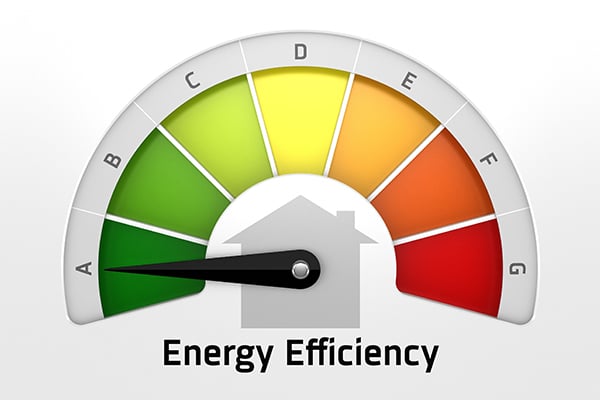Strategies Companies Can Use to Reduce IT Energy Consumption and Costs
With ethical considerations becoming more important for many consumers and the need to reduce the electricity bill for your business, why not consider accomplishing both goals with a single stratagem? By taking active steps to introduce green solutions to provide power for your business activities, you can save considerable amounts of money while also raising your corporate profile as an organization that incorporates conscientious and environmentally friendly solutions. With these strategies companies can use to reduce IT energy consumption and costs, your business will only stand to benefit.
Reduce Phantom Energy Consumption with Power Strips and Monitoring
Although the phrase "phantom energy" may sound more appropriate in the context of science fiction, it refers to a very real phenomenon where electronic devices like PCs, appliances, and more are supplied with power but not active. Also referred to as standby mode, having any electronic device plugged into a socket when it is not in use can actually account for the vast majority of its energy consumption. For example, it might be incredibly convenient to have a coffee machine for your office, but unless you unplug it before leaving the building, it will sit there drawing power 24 hours a day. Leaving individual devices plugged into power may not cost that much on their own. Still, collectively, they can increase your electricity bill a great deal over time, as well as lead to battery degradation and other issues.
One of the easiest ways to deal with excessive power consumption is to use power strips, which allow you to shut off multiple devices simultaneously. Rather than going through the trouble of manually plugging and unplugging devices, hitting the power strip switch gives you identical results. Some power strips even come with advanced capabilities that can manage things for you, including IR (infrared) sensors that shut down power after a set period of inactivity, built-in timers, and even motion sensors to prevent wasted energy.
Another relatively simple way to reduce power requirements is to purchase a device to monitor your electricity usage for each device in your company. By connecting devices to a monitor, you will be able to track precisely how much power each device uses, both in standby mode and when being actively used. It may also be worth contacting your local utility provider and using their smart power monitoring services (if available) to determine how much energy is being used when the business is not operating.
Consider Using Acer Green PCs and Other Energy-Efficient Technologies
Power strips and energy monitoring strategies can help, but their effectiveness is limited by the energy efficiency of the devices in question. Unless a given PC, printer, or other electronic device has been specifically designed to incorporate environmental concerns like reduced energy consumption, you might just be trying to stem the tide. One helpful strategy to consider when cutting energy costs is to purchase environmentally friendly PCs like the Acer Aspire Vero, which incorporates four separate power modes for maximum efficiency.
In addition to the traditional power setting options of Performance and Balanced, the Aspire Vero also includes Eco and Eco+ choices. The Eco setting sacrifices overall system performance for notable increases in battery life and power efficiency, while Eco+ goes as far as to disable critical systems to save energy. You can even use Acer's VeroSense app for smart battery management to monitor and select the best and most efficient mode for your particular needs.
It may also be worth considering if your business's lighting could benefit from an upgrade to a more energy-efficient system that does not sacrifice quality. Given how critical good lighting conditions are for manufacturers and other industries, the two best solutions are either LEDs (light-emitting diodes) or CFLs (compact fluorescent light bulbs), both of which offer excellent illumination while sharply reducing energy consumption. You may also want to evaluate whether all of the lighting used in your business is covering essential areas or if some could be eliminated.
Try to Avoid Peak Period Rates for Power and Get Your Workers Onboard
Proper timing is essential to maximize opportunities for greater energy efficiency. For example, you may not know power companies can charge variable rates depending on the time of day, with the most expensive periods generally being from the afternoon through the early evening. While this advice may not be practical for your particular business, determining which equipment and activities utilize the most energy and timing them accordingly can save you a lot of money in the long run.
Given that the success of your energy initiatives depends on your employees pitching in and understanding the importance of reducing costs and usage, it is crucial to emphasize how it will benefit them. By explaining how a lower power bill will allow the business to purchase new machinery, you can convey how it will improve everyone's experience. You should also seek employee input on potential solutions for reducing power costs to help your workers feel empowered and create consensus. An effective communication strategy will help ensure that your systems for lowering power costs and consumption will eventually bear fruit.
There are several strategies for reducing how much you spend on electricity for IT and other necessities, so take the time to evaluate your needs and determine the best means of reducing your power requirements. Check out Acer's website for more information on energy-efficient PCs and other solutions.
About Dan Martin: Daniel Martin is a technology researcher and writer with more than a decade of experience. He is a professional librarian and an experienced tech teacher, writer and blogger. Specializing in technology, Dan has taught courses in technology and writing at the college level, developed web pages for businesses and higher educational institutions, written on tech topics for leading national publications and created numerous how-to guides.













